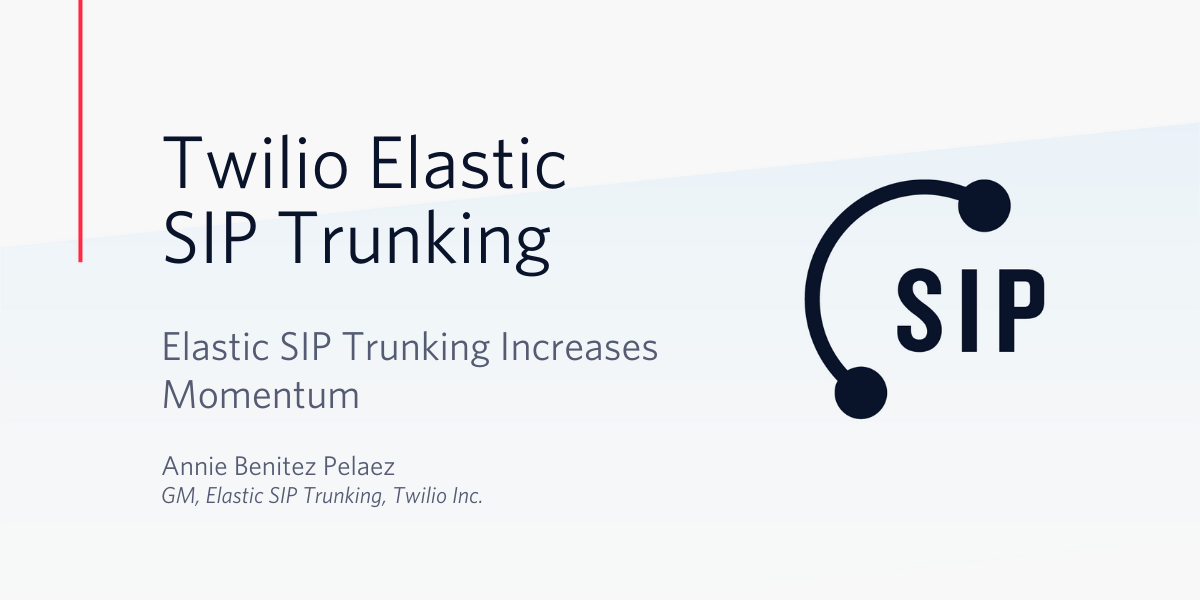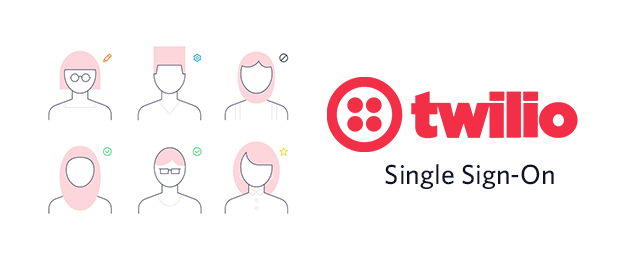Enabling and Orchestrating Multichannel Customer Communication With Twilio
Time to read:
This post is part of Twilio’s archive and may contain outdated information. We’re always building something new, so be sure to check out our latest posts for the most up-to-date insights.
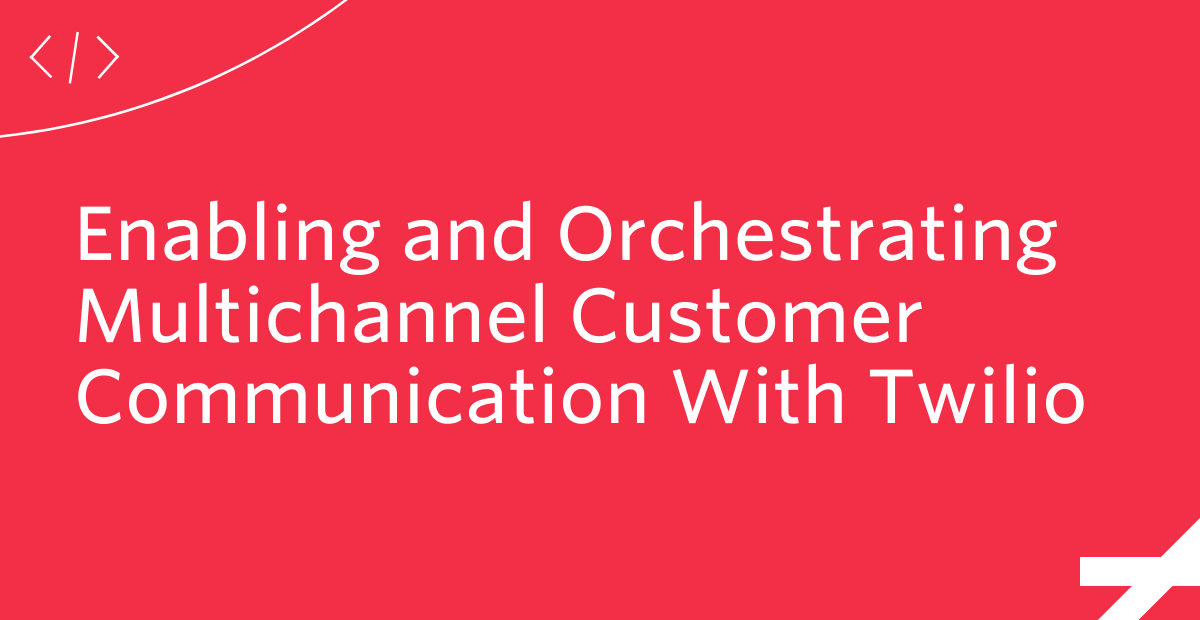
Businesses and customers expect to interact across many different channels—phone calls, webchat, SMS, emails, and more. Building out and orchestrating these channels is difficult enough, as most enterprises have numerous tech stacks and platforms. Now, as the world shifts to remove engagement via video, multichannel communication has become even more challenging.
And in a world where enterprise applications that originally deployed on-premise may now move to the cloud, and where consumers find business communications annoying, it’s clear that enterprises have a serious challenge ahead of them in improving customer communications.
Introducing the leader in multichannel communication
Twilio is a pioneer in the API-driven communication space. Its platform includes a wide variety of communications channels, including email, messaging (SMS, WhatsApp, chat), VoIP, and video. These offerings are hosted in the cloud, ensuring that the services can maintain a 99.95% (or higher) service-level agreement and scale to address customer needs.
Using Twilio’s trusted, enterprise-grade communications platform and developer-friendly APIs allowed Zendesk to integrate voice communications directly into its customer support across 40 countries within 3–4 months. Twilio’s ease of use is also a huge advantage, enabling the city of Pittsburgh to migrate its 311 infrastructure to fully remote operations in just 4 days by leveraging Twilio Flex.
For an enterprise that wants to enable and orchestrate multiple communications channels over various technologies and systems (and who doesn’t!), Twilio has an API that can get it done.
Multichannel communication example: Our fictitious enterprise
To demonstrate how Twilio enables leadership teams to build multichannel engagement over a diverse stack, we’ll use a fictitious company—OnLearn—that operates in the educational technology space.
OnLearn has a major challenge ahead of it. The CEO has asked the CTO to improve and modernize customer communications, as the company is behind with customer communications channels and engaging educators and students. To make this even harder, OnLearn’s systems span several technology stacks, both on-prem and cloud, and over 20 years.
Let’s look at how OnLearn’s CTO solves this challenge through 4 customer communications initiatives.
Email: The first multichannel engagement initiative
The first issue our CTO decides to address is an obvious one: OnLearn’s platform doesn’t send welcome emails when a new user creates an account. The team needs a solution that supports:
- Different templates based on customer type
- Multiple languages
- An API other systems can reuse
- Sales and marketing team management
- Fast implementation
The team looks at several solutions and decides to use the Twilio SendGrid API to generate these transactional emails. The Twilio SendGrid API meets all the requirements being cloud-based and platform agnostic. Therefore, the team can use it for this project and future projects on other stacks.
Then, the project kicks off. While the sales and marketing teams define the dynamic templates, a pod of 3 developers investigates the technical implementation of the Twilio SendGrid API. The customer onboarding application is in Node.js, and the developers are happy to discover that Twilio SendGrid provides a Node.js client that includes functionality to manage and consume templates, along with sending the email itself. That same day, developers insert the following block of code:
Within 2 days, the integration is complete and deployed to the cloud behind a feature flag, allowing for beta testing. There were no concerns connecting remotely to Twilio SendGrid since both the application and Twilio SendGrid are cloud-based.
SMS: The second multichannel communication strategy
At this point, the customer success team escalates a new issue to the CTO: students get charged fees without notifications, resulting in overdrafts in their bank accounts.
The product team suggests reusing the newly built email feature, while the customer research team suggests including text-based notifications since 50% of OnLearn’s students access classrooms via mobile devices.
Given that Twilio has already been integrated, was easy to implement, and works well, the team uses Twilio SMS. The developers follow the Twilio SMS Python Quickstart Guide and have the integration prototype ready within a few hours. Twilio hosts the Billing System on-premise, but since Twilio is a cloud-based API—accessible from on-prem and the cloud with no code changes—there aren’t any issues connecting to Twilio.
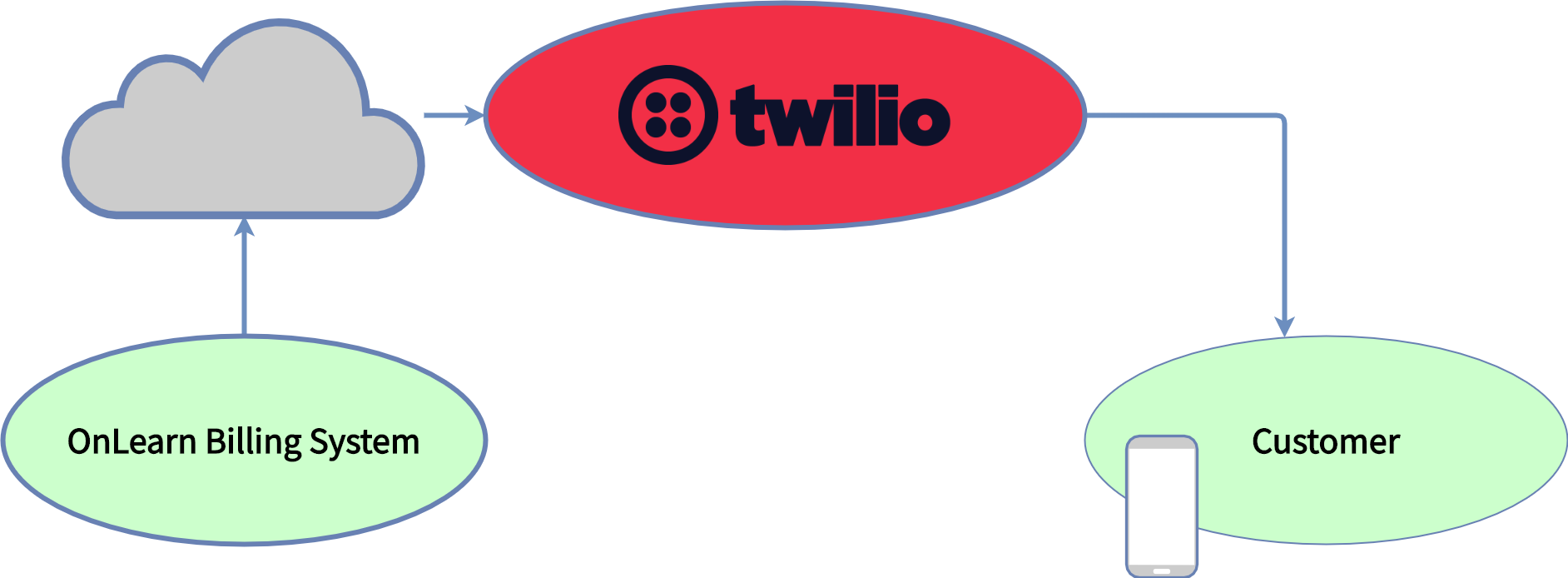
Unified contact center: The third multichannel communication tactic
The CTO has now quickly integrated 2 of Twilio’s APIs into the OnLearn platform: email and SMS. Now, they decide to solve an even bigger pain point—customer support at a cross-organizational level.
Since OnLearn predates SaaS, the customer support contact center was built in-house and in an ad-hoc fashion. Originally a way to support customers via email, a system upgrade later included interactive voice response (IVR) and Salesforce for better tracking cases and escalations. This patchwork of tools and systems includes piecing together data from multiple systems, and there’s an entire full-time team dedicated to keeping the system operational.
This project is larger in scope than implementing a single API. That’s why the team wants to integrate email management, implement webchat, and hook up voice capabilities with Salesforce. For this project, the team again chooses a Twilio product—Twilio Flex—a programmable, cloud-based contact center. The team chose Flex for several reasons:
- Twilio Flex can facilitate rebuilding the contact center—this time, using a purpose-built, SaaS-based contact center platform with APIs the team already understands. With Flex, they can stay up to date with the latest in communications channels and quickly add chatbots, IVR, remote agents, and more.
- Twilio (rather than the operations team) maintains the Salesforce integration.
- Twilio TaskRouter—a tool that Twilio provides to help define workflow through the customer support system—can be leveraged by the customer success team to make changes without code or downtime.
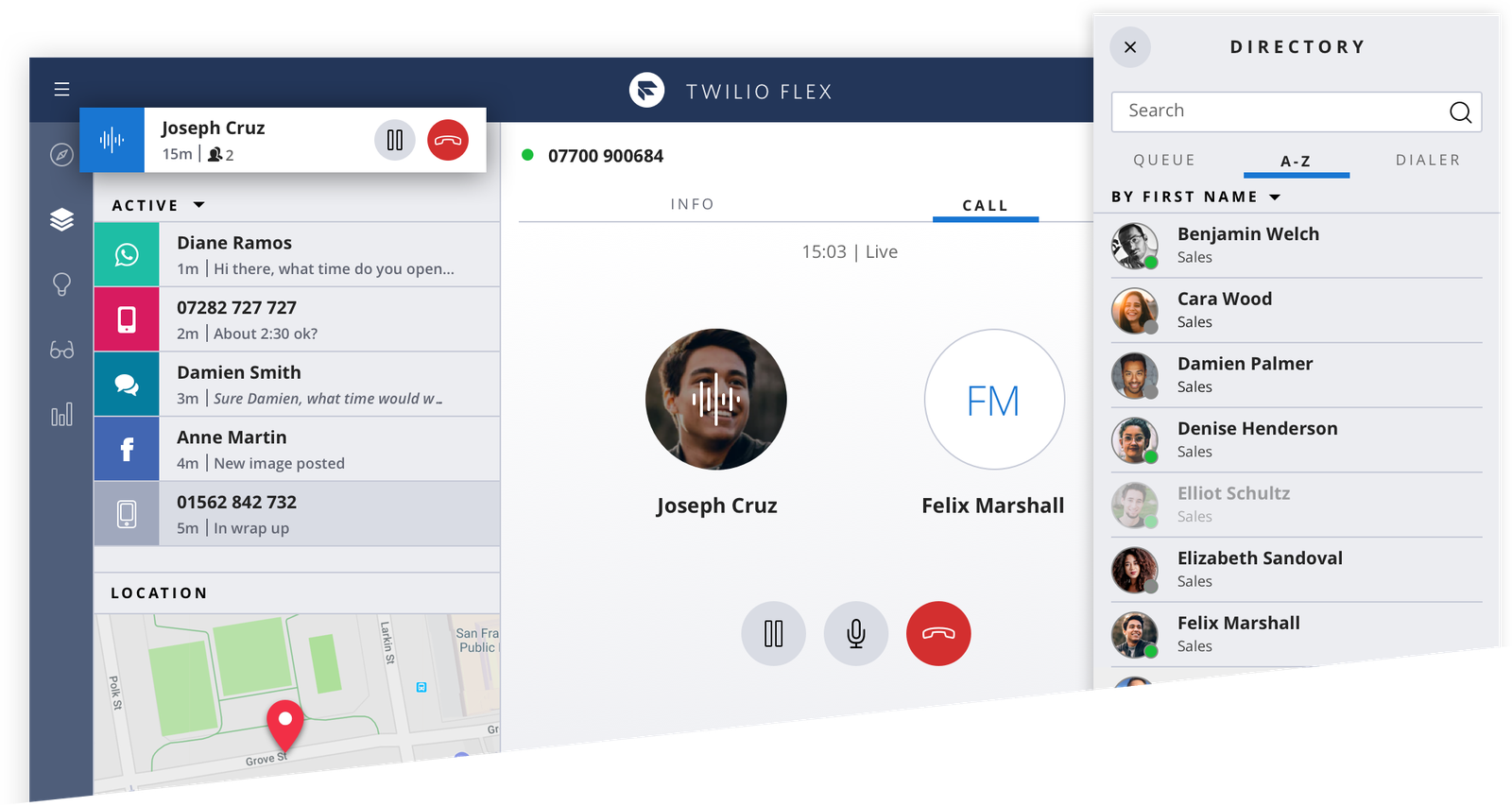
While this project will take more implementation time than the others, using Twilio allows the team to use a similarly small pod of 3–4 developers. This is a common benefit to using Twilio. For example, when Shopify migrated to Twilio Flex, it dedicated a team of 3 developers and 2 interns to work on the project, taking just a few months to go from concept to production.
With the Flex-based implementation in place, OnLearn can now retire a variety of legacy systems, saving a significant amount of time and money.
Video: The final multichannel frontier
Everyone is happy: the CTO, sales, marketing, and support teams. The implementations with Twilio went smoothly, customer communications are better, and the team can now focus less on technology and more on business-specific needs.
However, a new challenge now arrives—COVID-19. OnLearn’s platform was originally for in-person learning. Now, the systems need to quickly pivot to remote. Once again, OnLearn looks to Twilio. This time, it leverages Twilio’s Video and Chat, both of which support JavaScript, Android, and iOS software development kits (SDKs) for the front end, and various languages for the back end. In OnLearn’s case, it leverages the Python SDKs to get this functionality into the market in weeks, not months or years.
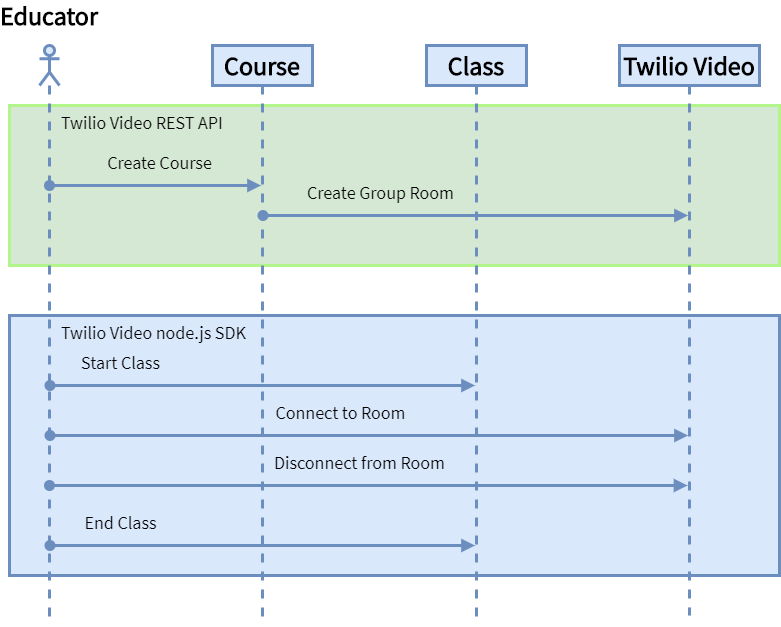
Integrating the Python SDKs for managing chat channels and video rooms programmatically is straightforward, and hooking into the existing life cycle is painless. Most of the work occurs in the user interface, where the front-end developers can quickly use the web and mobile SDKs to add chat and video windows—the quickstarts that Twilio provided were extremely helpful.
The bigger wins were on the infrastructure side. Although the infrastructure team had been researching how to build and manage a streaming infrastructure, now Twilio can handle complex issues such as:
- Offline devices
- State consistency across devices
- WebRTC nitty-gritty
- Customers dialing in via phone
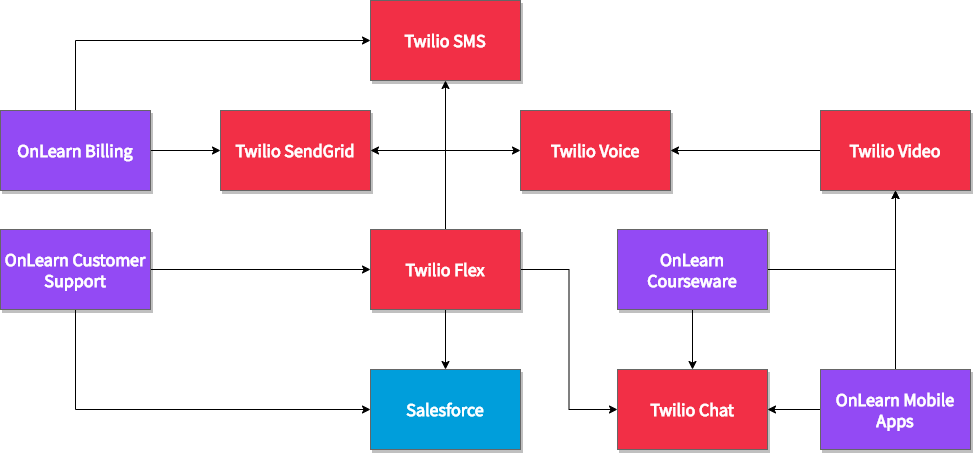
Build multichannel communication engagement with Twilio
The OnLearn CTO has successfully rolled out various customer communications improvements across OnLearn’s systems. To name a few accomplishments:
- The development teams are happy with how easy it was to connect to Twilio from the various stacks.
- The sales and marketing teams are ecstatic to engage customers better.
- The CEO is happy that the company has improved its customer communications, modernized several systems, and now can increase its user base, not just retain it.
- The students are happier and more engaged—which is perhaps most important.
Are you ready to learn how Twilio’s scalable, cloud-based APIs can help your enterprise build multichannel, customer-centric engagement? Download our white paper to learn how to use Twilio to quickly and effectively roll out a multichannel strategy.
Related Posts
Related Resources
Twilio Docs
From APIs to SDKs to sample apps
API reference documentation, SDKs, helper libraries, quickstarts, and tutorials for your language and platform.
Resource Center
The latest ebooks, industry reports, and webinars
Learn from customer engagement experts to improve your own communication.
Ahoy
Twilio's developer community hub
Best practices, code samples, and inspiration to build communications and digital engagement experiences.

